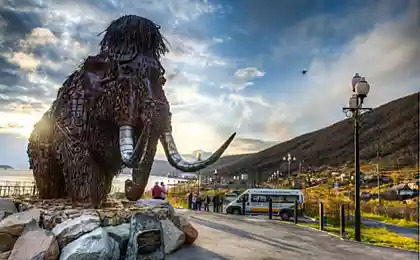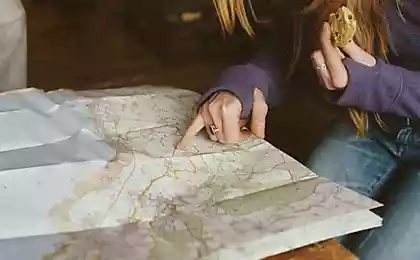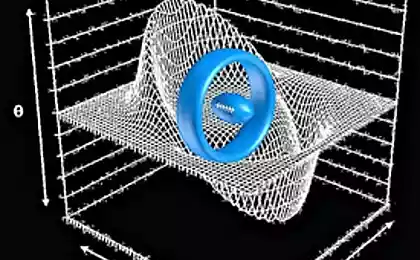1840
History Magadan (22 photos)
Magadan is located in the north-east of Russia on the shores of the Sea of Okhotsk. Time difference between Moscow and Magadan - eight hours. The distance between Magadan and the capital is 7110 kilometers. Magadan - the administrative center of Magadan region, one of the largest seaports of the north-east of Russia. Population: 96,000 inhabitants (2011).
Magadan covers an area of 1,216 square kilometers between the bays Nagaeva and Gertner. The city stands on permafrost in a seismically active zone. For this region is characterized by harsh climatic conditions. Its climate is influenced by the Sea of Okhotsk. The average annual temperature: -3ºC; average temperature in January: -17ºS; the average August temperature: + 12 ° C. Annual rainfall: 530 mm.
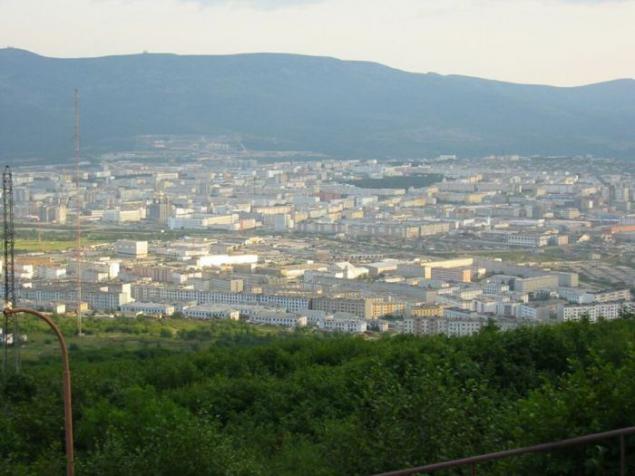
Klondike Gold Rush attracted the interest of the Russian government to Chukotka and Okhotsk coast. On the outskirts of Russia were filled several expeditions, but industrial gold was found. In 1915, in the pool Srednekan lone prospector Shafigulin nicknamed Boriska found the first gold in Kolyma. In 1926, an expedition SV Obruchev established favorable geological conditions for the occurrence of this metal.

Two years later, the first Kolyma expedition YA Bilibin initiated a detailed study of the Kolyma River. Reliable information about the economy of the region were obtained hydrographic expedition JF Young, who recommended the bay Nagaeva as convenient for the construction of the port and the starting point of the road construction.
October 13, 1928 Ola executive committee decided on the construction of the East of Even (Nagaevskaya) kultbazy, and June 22, 1929 on the shore of the bay came the first builders started assembling three residential homes, schools, veterinary centers, hospitals and boarding school building. The first school was built. In autumn it for a month to live geologists with YA Bilibin, returning to the mainland. School that year took the first disciples.
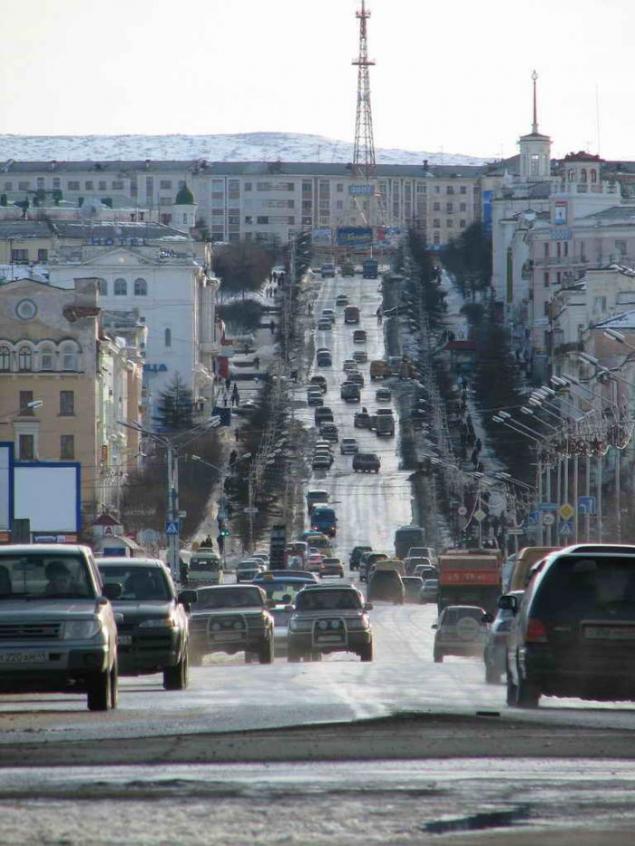
Since 1933, the first school he studied Sergey Narovchatov. School went up on the hill first street October. One-storey timbered subsequently plastered building has survived to the present day - the house down the street 5 Primorye. Then there was a warehouse. For a long time stood empty, with boarded up windows. Around him up modern buildings. On one of them - a plaque that tells that from here went to the first street Magadan - October.
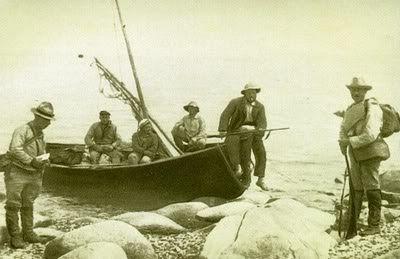
In 1930, from the sea to cut a swathe Magadanke where there kultbazy structure, a factor base "Soyuzzoloto." Nagaevo village became the center of the newly formed Okhotsk Evensk National District. When in November 1931 on the ship "Slavstroy" profit demobilized soldiers of the Special Far Eastern Army, the population increased immediately from 500 to 2,000. Zapestreli tent - "calico" - town and tent street was named after the commander of the Far Eastern Army VK Blucher (now the street Nagaevskaya).
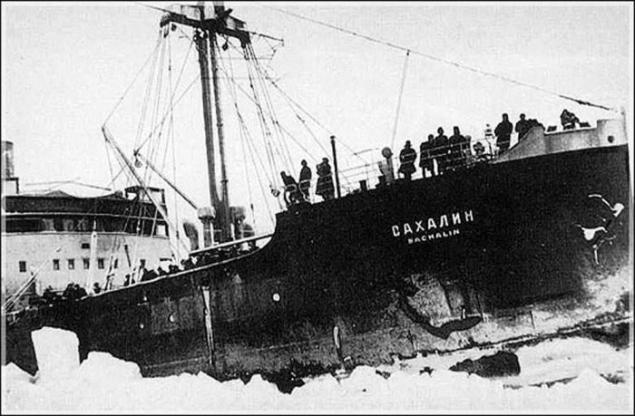
In November 1931 was established "State Trust for industrial and road construction in the area of the Upper Kolyma" Dalstroy. " February 4 is not adapted for navigation in ice steamship "Sakhalin" came to the gate of the bay Nagaeva. Then he did not let the ice. On the "Sakhalin" came a group of managers of the trust headed by the first director of "Dalstroi" Eduard Berzin. Steamer and brought the first group of prisoners.
Order number 1 was the construction of the road. In December 1931 took an unsuccessful attempt to break through the snow and Elekchanu taiga jungle on four lorry. Only the fifth time the heroic efforts were crowned with success, and tractor convoy reached Elekchana - beginning of an alloy.
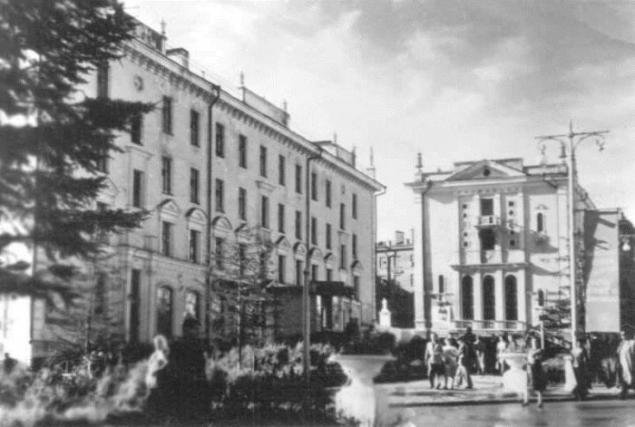
Place to build a support base Berzin EP chose three kilometers from the bay. In a short time on the banks of the river Magadanki built barracks, mechanical workshops, a sawmill small factory with 13-km narrow gauge railway shuttle to the forest. Having been here in the summer of 1932 Sergei Obruchev wrote: "In the valley of the river on a spacious site and free ... built the town of Magadan - the modern capital of the coast. From his Nagaevo buses (yet trucks with benches), and even, as they say, civilization has gone so far that these buses should beware of thieves ».
In 1932, on the ship "Shaturstroy" brought 20 prefabricated timber frame houses, setting them on the streets of the Soviet and the Commune. The following year, the same house came from Sakhalin. Just a month later they were collected, as were the streets and Soviet Commune. Came into operation and the first water supply.
Two years later, Kolyma highway was built up to 35 km, and the passage was opened up to 150 km. In the shortest time built barracks, mechanical workshops, berthing facilities. In 1932 SV Obruchev wrote: "In the valley of the river Magadan on the spacious and free site is built ... the town of Magadan - the modern capital of the coast».
On the shore Magadanki in the area 31 of the first quarter, up a brick factory, who worked on the local loam. Brick was not enough, and as insulation in construction used compressed moss. In the fourth kilometer originated adobe town. The first brick building - two-storey houses - began to build in 1933 the first public buildings were power and telegraph. Last preserved to this day (the bus station is opposite). Next to him - a second body Polytechnic, a former building frontier. In 1933 he built a sawmill on the first narrow-gauge railway 13 km laid in the valley Magadanki.
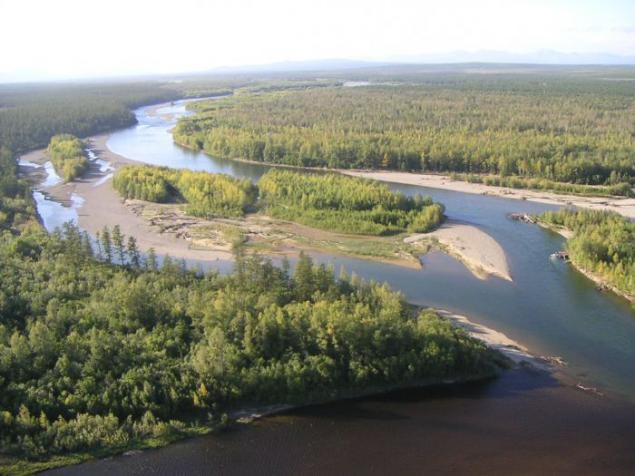
Next summer commissioned a 50-meter pier, and December 29, 1934 Magadan took steamer "Whalen." With its deck dropped four domestic aircraft. They pilots DN Tarasov, M. Sergeev, NS Snezhkov made truly heroic flights - from ice reconnaissance to thousands of kilometers long flights without maps.
In the same year opened a college for the training of mining, agricultural and teachers. Will have its own permanent "Sovetskaya Kolyma", publishing, museum. In May 1935, construction began on a four-storey school №1 project send Nadezhda Krupskaya on request Berzin.
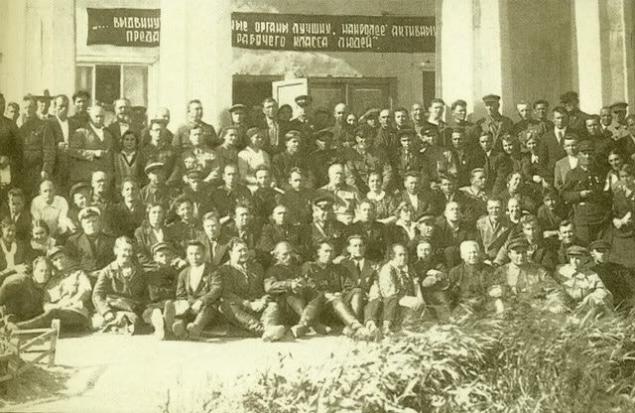
In the same year opened a college for the training of mining, agricultural and teachers. Will have its own permanent "Sovetskaya Kolyma", publishing, museum. In May 1935, construction began on a four-storey school number 1 of the project, sent NK Krupskaya at the request of EP Berzin
In December 1935 commissioned sudokotelny, mechanical and blacksmith shops Marchekanskogo plant, where they began to produce steel boats, dry cargo and oil barges. Two years later became an independent company repair plant.
In 1936 was established radio contact with the mainland. Magadan heard the voice of the Moscow announcer. "In the sixth year of operation, - EP Berzin wrote in the journal" Kolyma "-" Dalstroy "again doubles the production and its importance will take place, equal to several major gold mining trusts Union».
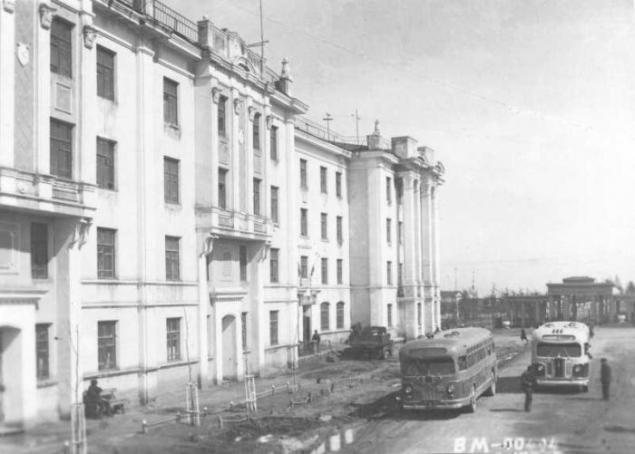
Initially, the city grew as a base to supply the Kolyma mines, which was carried out and the track, the main forces were sent geologists, miners, construction workers. Given the remoteness of the deposits, the bad climate of the coast, Berzin was planning not to develop Magadan, and build the main town on the edge of the Kolyma gold, at the mouth of the river drag. Were offered other options - at the mouth of Orotukan, near the present village Glass and Uptar. These plans did not come true.
Since 1937 began a black period in the life of the region. Were persecuted on trumped up charges lovely people giving their all development of the North. Shot EP Berzin, arrested Robert Apin, political commissar, the initiator of all publishing endeavors in Magadan, journalist Alex Kosterin writer Isaac Gekhtman. heads of factories, offices. Only in 1938-39 Magadan took tens of thousands of convicts, so-called "enemies of the people." Among them were General AV Gorbatov, designer Sergei Korolev, Professor AK Boldyrev, agronomist CG Gutydze, film actor GS Zhzhenov ... Their hard labor built the city.
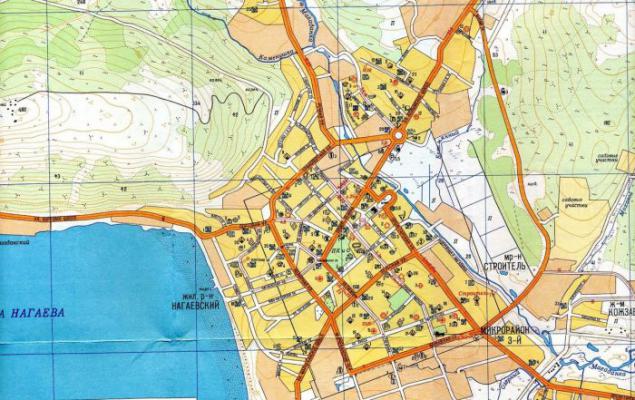
July 14, 1939 a working village transformed into the city. This date is considered to be the year of birth of Magadan, although it was founded ten years earlier. In April 1941 commissioned the building of the main control "Dalstroi" (later located here "Severovostokzoloto"). It stood out among the other buildings scale. Authors of the project architect NN Jurgenson, designer VG Drozdov. In October this year, completed the construction of the House of Culture (1946 - Theater. Gorky), which was conducted by the architects EV Somov and IV Polyakov, designer VG Drozdov. The city acquired its business and community center.
September 10, 1941 - created Magadan Music and Drama Theatre
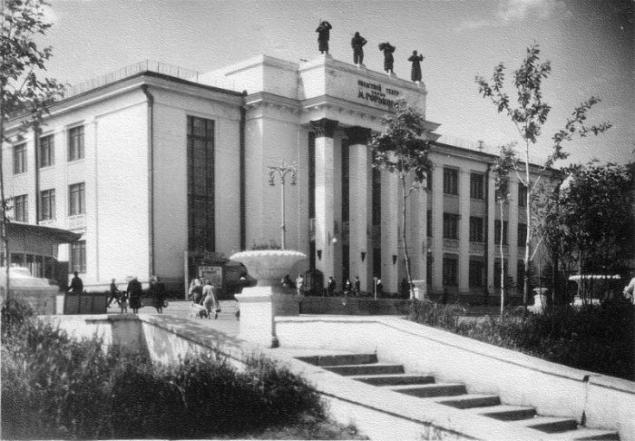
Magadan Music and Drama Theatre - The twentieth century
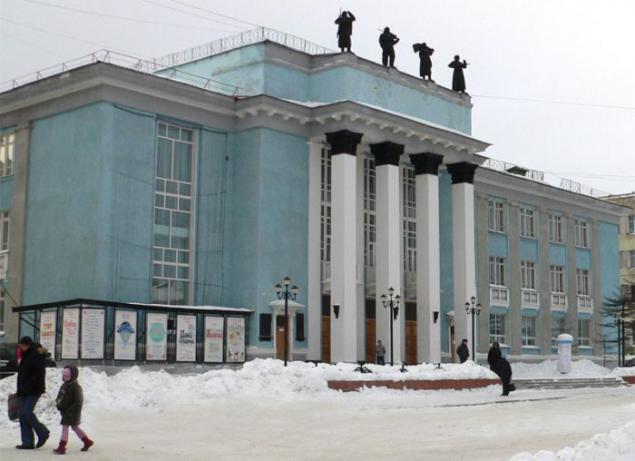
Magadan theater has its origins from a small team began work in 1933 in "Dahlström," before the foundation of the city of Magadan. Characteristically, the first production staged in honor of the proletarian solidarity of workers around the world - May 1, 1933 - called "Utopia". Originally there were two on the Kolyma Theatre Department at the club Northeast labor camps (most of the troupe consisted of prisoners in the past professional artists) and workers' clubs at Kolyma District Council trade unionists gold and platinum (in the company - civilian employees). Then these two collective administratively joined the club in the Central District Committee of the Union of gold and platinum, later called Club them. Gorky. The first directors - G.P.Shnabel, I.P.Belov, G.N.Katsman, V.V.Andreev-Burlak.
September 3, 1941 issued by order of the Chief "Dalstroi" merger Theatre Gorky and Magadan Variety Theatre (MET) and the establishment of September 10, single Magadan Music and Drama Theater. (Gamo. F. p-23, op. 1, d. 79, n. 92 // Magadan. The abstract of the past ... - S. 118, the author Kozlov AG)
Thus, from 10 September to function 1941stal single Magadan Music and Drama Theatre Dalstroi, director was F.A.Yarikov. Over the years, the theater artists worked N.S.Artamonov, O.L.Dolgoruky, G.S.Zhzhenov, E.M.Negina, M.A.Biber, JE Rosen Strauch; V.I.Shuhaev artist; L.V.Varpahovsky director, among others has put only in the history of the theater opera - "La Traviata"; singer V.A.Kozin and others. In 1996 received its present name.
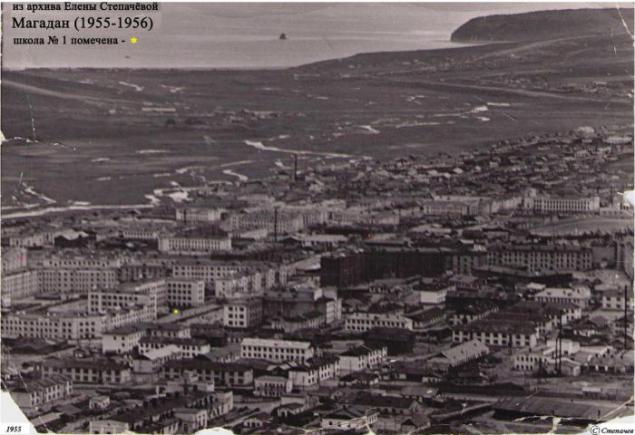
During the Great Patriotic War, he lived with the country unified desire: to do everything to defeat the enemy. In these difficult years came into operation Glassworks on the basis of local volcanic ash. PROMKOMBINAT manufactured the clothing and footwear, stamped buttons, spoons, rags was the production of wool. Tannery gave glue, soap, toothbrushes. Began producing confectionery pasta factory. Cars were transferred to the gas generator fuel.
Magadan hard work helped the front. In 1942, the army veterans sent a train with gifts. And just in Kolyma were collected for defense activities of about half a billion rubles. Link bombers "Komsomol Kolyma" air squadron "Soviet polar" jets "Dalstroevets", "Kolyma farmer", "social activist" Dalstroi "tank column" Pioneer Kolyma "- this is not a complete list of military equipment built at the expense of kolymchan. Own money bought tanks and went to fight them husband and wife JF and AL Boyko, car repair factory workers AM Efanov, IE Grooms, AP Timchenko, MK Goldfinches V. Yakovlev, employees Kolymaproekta AP Hodosko and NG Tsybin.
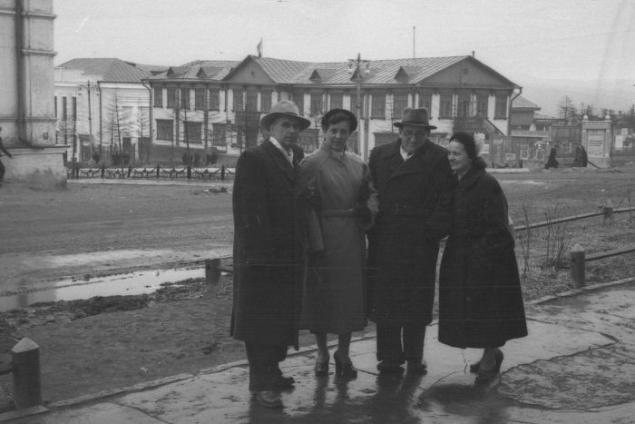
With arms in hand fought many Magadan. Komsomolets Skuridin Ivan died in battles for the liberation of Leningrad, repeating a feat Matrosov. Honestly fought and many former prisoners.
After the war, went through Magadan new stages with the "cons", mostly Soviet prisoners freed from Nazi camps. They built roads, new mines in Kolyma, Indigirka. Their work has been widely used in the construction of buildings in Magadan. And not all were able to survive in the harsh conditions of the North and hard labor -Many rehabilitated posthumously.
In August 1945, came "Felix Dzerzhinsky" two thousand girls on board, came to Kolyma on Komsomol. Many of them for decades to join her life with the harsh edge. They belonged to a well-deserved and the school teacher of the RSFSR, director Lyceum VE Gogoleva.
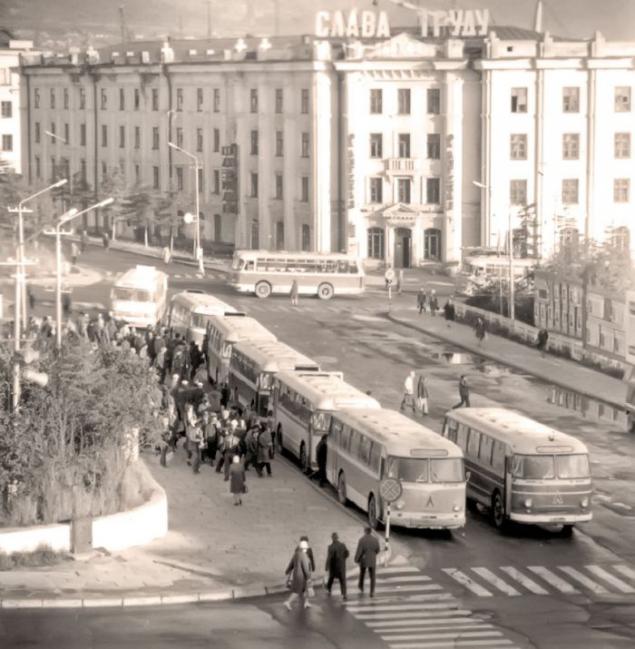
In the postwar years intensified construction. It was then taken shape the city center with beautiful buildings on Lenin Street, Port, Gorky, Pushkin, reflect the impact of the Leningrad school. Pa construction of the building work and Japanese prisoners of war.
In December 1953 in the "Dalstroi" was established Magadan region, the city became its administrative, economic, scientific and cultural center. Quickly change the appearance of the city-camp. Transit towns could not accommodate returning to the mainland thousands of rehabilitated settlers parole. Liquidated camp areas, demolition of the barracks. In 1953, students took a beautiful building Mining and Geological College (PN Andrikamns architect, designer VA Illarionov). The perfect gift for the residents of the city became the Sports Palace (authors of the project AV Mashinskii, SM Kurdubov, GP Malschkin) - a unique structure that fit perfectly into the ensemble of the park. Opening it was held July 15, 1954 After three years in the city lit up TV screens, receive signals amateur television studio.
In 1963, adopted a new master plan for the city, which provided for an increase in the development area five times. On the eve of the 25th anniversary of its population was more than 70 thousand people. In 24 schools had an enrollment of 11,000 students.
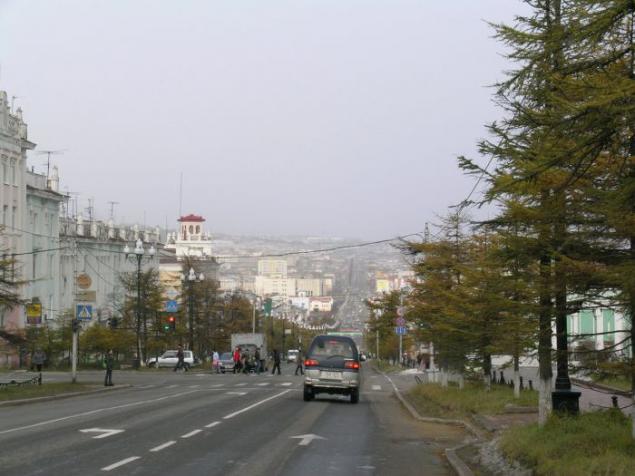
The 1990s were a time of rapid population decline. The main factor in this process was repeated growth of out-migration. During the period from 1989 to 2004, the number of residents decreased by one third. Subsequently, the situation has stabilized - the outflow of population has decreased. Currently, he is partially offset by the influx of people from the area.
Today, prominent in the urban industry engaged in the manufacture of mining equipment, machinery, electricity, heating, industry, construction industry, food industry, including fish processing. Among the large industrial facilities are Magadan repair-mechanical plant, producing mining equipment and accessories, aircraft repair plant, which produces the repair of civil aviation and cargo. Production repair and mechanical plant is delivered in all regions of Russia gold and several foreign countries.
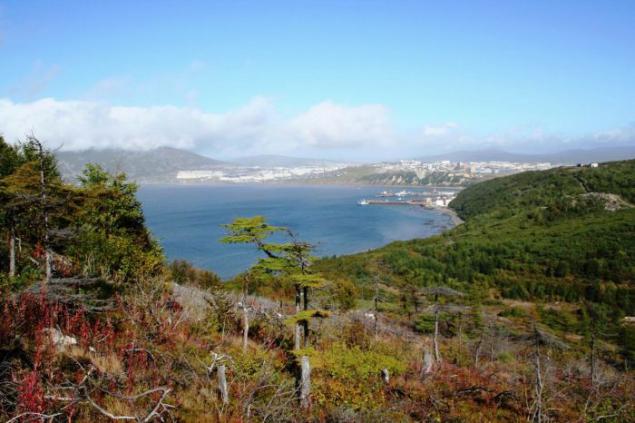
In Magadan is located a few research institutes, higher and secondary specialized educational institutions, including the North-East Interdisciplinary Research Institute FEB RAS, Institute of Biological Problems of the North, Far East Branch, Research Center "Arktika" FEB RAS, Magadan Research research institute of Fisheries and Oceanography, Research Institute of Gold and Rare Metals, Zonal Agricultural Research Institute of the North-East Branch of the Pacific Institute of Fisheries and Oceanography, Northeastern State University, Magadan Institute of Economics - branch of the St. Petersburg Academy of Management and Economics Branch Moscow State Law Academy. OE Kutafin, a branch of the Russian Academy of Entrepreneurship, an affiliate of the Modern Humanitarian Academy, a subsidiary of the Russian State University for the Humanities. The city has seven vocational schools and 22 secondary schools.

Magadan Commercial Sea Port is open all year. In 2006, his cargo amounted to 1, 1 million tons. International Airport "Magadan" is 53 kilometers north of the city. Hence aircraft fly vMoskvu (Sheremetyevo, Domodedovo) and in other localities of the Far East. Highway M-56 "Kolyma" Magadan connects with Yakutia.
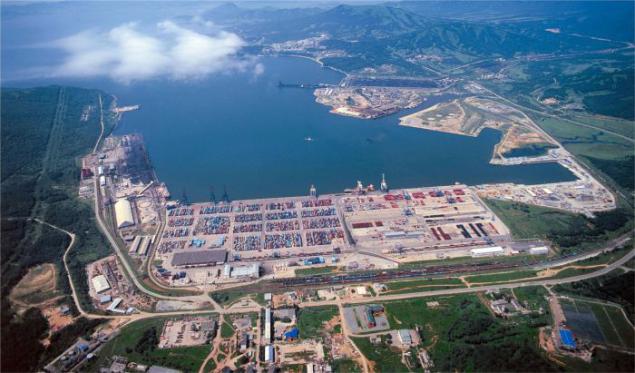
Attractions: Magadan Regional Museum, Memorial Apartment Museum Vadim Kozin, Natural History Museum of the North-East Interdisciplinary Research Institute, Far Eastern Branch of the Russian Academy of Sciences, Holy Trinity Cathedral, the Mask of Sorrow monument. Mask of Sorrow monument was designed by Ernst Neizvestny and Camille Kazaeva and dedicated to the memory of victims of political repression. This 15-meter-high structure built on a hill steep in 1996. Its interior is a replica of a prison cell era gulag.
Magadan covers an area of 1,216 square kilometers between the bays Nagaeva and Gertner. The city stands on permafrost in a seismically active zone. For this region is characterized by harsh climatic conditions. Its climate is influenced by the Sea of Okhotsk. The average annual temperature: -3ºC; average temperature in January: -17ºS; the average August temperature: + 12 ° C. Annual rainfall: 530 mm.

Klondike Gold Rush attracted the interest of the Russian government to Chukotka and Okhotsk coast. On the outskirts of Russia were filled several expeditions, but industrial gold was found. In 1915, in the pool Srednekan lone prospector Shafigulin nicknamed Boriska found the first gold in Kolyma. In 1926, an expedition SV Obruchev established favorable geological conditions for the occurrence of this metal.

Two years later, the first Kolyma expedition YA Bilibin initiated a detailed study of the Kolyma River. Reliable information about the economy of the region were obtained hydrographic expedition JF Young, who recommended the bay Nagaeva as convenient for the construction of the port and the starting point of the road construction.
October 13, 1928 Ola executive committee decided on the construction of the East of Even (Nagaevskaya) kultbazy, and June 22, 1929 on the shore of the bay came the first builders started assembling three residential homes, schools, veterinary centers, hospitals and boarding school building. The first school was built. In autumn it for a month to live geologists with YA Bilibin, returning to the mainland. School that year took the first disciples.

Since 1933, the first school he studied Sergey Narovchatov. School went up on the hill first street October. One-storey timbered subsequently plastered building has survived to the present day - the house down the street 5 Primorye. Then there was a warehouse. For a long time stood empty, with boarded up windows. Around him up modern buildings. On one of them - a plaque that tells that from here went to the first street Magadan - October.

In 1930, from the sea to cut a swathe Magadanke where there kultbazy structure, a factor base "Soyuzzoloto." Nagaevo village became the center of the newly formed Okhotsk Evensk National District. When in November 1931 on the ship "Slavstroy" profit demobilized soldiers of the Special Far Eastern Army, the population increased immediately from 500 to 2,000. Zapestreli tent - "calico" - town and tent street was named after the commander of the Far Eastern Army VK Blucher (now the street Nagaevskaya).

In November 1931 was established "State Trust for industrial and road construction in the area of the Upper Kolyma" Dalstroy. " February 4 is not adapted for navigation in ice steamship "Sakhalin" came to the gate of the bay Nagaeva. Then he did not let the ice. On the "Sakhalin" came a group of managers of the trust headed by the first director of "Dalstroi" Eduard Berzin. Steamer and brought the first group of prisoners.
Order number 1 was the construction of the road. In December 1931 took an unsuccessful attempt to break through the snow and Elekchanu taiga jungle on four lorry. Only the fifth time the heroic efforts were crowned with success, and tractor convoy reached Elekchana - beginning of an alloy.

Place to build a support base Berzin EP chose three kilometers from the bay. In a short time on the banks of the river Magadanki built barracks, mechanical workshops, a sawmill small factory with 13-km narrow gauge railway shuttle to the forest. Having been here in the summer of 1932 Sergei Obruchev wrote: "In the valley of the river on a spacious site and free ... built the town of Magadan - the modern capital of the coast. From his Nagaevo buses (yet trucks with benches), and even, as they say, civilization has gone so far that these buses should beware of thieves ».
In 1932, on the ship "Shaturstroy" brought 20 prefabricated timber frame houses, setting them on the streets of the Soviet and the Commune. The following year, the same house came from Sakhalin. Just a month later they were collected, as were the streets and Soviet Commune. Came into operation and the first water supply.
Two years later, Kolyma highway was built up to 35 km, and the passage was opened up to 150 km. In the shortest time built barracks, mechanical workshops, berthing facilities. In 1932 SV Obruchev wrote: "In the valley of the river Magadan on the spacious and free site is built ... the town of Magadan - the modern capital of the coast».
On the shore Magadanki in the area 31 of the first quarter, up a brick factory, who worked on the local loam. Brick was not enough, and as insulation in construction used compressed moss. In the fourth kilometer originated adobe town. The first brick building - two-storey houses - began to build in 1933 the first public buildings were power and telegraph. Last preserved to this day (the bus station is opposite). Next to him - a second body Polytechnic, a former building frontier. In 1933 he built a sawmill on the first narrow-gauge railway 13 km laid in the valley Magadanki.

Next summer commissioned a 50-meter pier, and December 29, 1934 Magadan took steamer "Whalen." With its deck dropped four domestic aircraft. They pilots DN Tarasov, M. Sergeev, NS Snezhkov made truly heroic flights - from ice reconnaissance to thousands of kilometers long flights without maps.
In the same year opened a college for the training of mining, agricultural and teachers. Will have its own permanent "Sovetskaya Kolyma", publishing, museum. In May 1935, construction began on a four-storey school №1 project send Nadezhda Krupskaya on request Berzin.

In the same year opened a college for the training of mining, agricultural and teachers. Will have its own permanent "Sovetskaya Kolyma", publishing, museum. In May 1935, construction began on a four-storey school number 1 of the project, sent NK Krupskaya at the request of EP Berzin
In December 1935 commissioned sudokotelny, mechanical and blacksmith shops Marchekanskogo plant, where they began to produce steel boats, dry cargo and oil barges. Two years later became an independent company repair plant.
In 1936 was established radio contact with the mainland. Magadan heard the voice of the Moscow announcer. "In the sixth year of operation, - EP Berzin wrote in the journal" Kolyma "-" Dalstroy "again doubles the production and its importance will take place, equal to several major gold mining trusts Union».

Initially, the city grew as a base to supply the Kolyma mines, which was carried out and the track, the main forces were sent geologists, miners, construction workers. Given the remoteness of the deposits, the bad climate of the coast, Berzin was planning not to develop Magadan, and build the main town on the edge of the Kolyma gold, at the mouth of the river drag. Were offered other options - at the mouth of Orotukan, near the present village Glass and Uptar. These plans did not come true.
Since 1937 began a black period in the life of the region. Were persecuted on trumped up charges lovely people giving their all development of the North. Shot EP Berzin, arrested Robert Apin, political commissar, the initiator of all publishing endeavors in Magadan, journalist Alex Kosterin writer Isaac Gekhtman. heads of factories, offices. Only in 1938-39 Magadan took tens of thousands of convicts, so-called "enemies of the people." Among them were General AV Gorbatov, designer Sergei Korolev, Professor AK Boldyrev, agronomist CG Gutydze, film actor GS Zhzhenov ... Their hard labor built the city.

July 14, 1939 a working village transformed into the city. This date is considered to be the year of birth of Magadan, although it was founded ten years earlier. In April 1941 commissioned the building of the main control "Dalstroi" (later located here "Severovostokzoloto"). It stood out among the other buildings scale. Authors of the project architect NN Jurgenson, designer VG Drozdov. In October this year, completed the construction of the House of Culture (1946 - Theater. Gorky), which was conducted by the architects EV Somov and IV Polyakov, designer VG Drozdov. The city acquired its business and community center.
September 10, 1941 - created Magadan Music and Drama Theatre

Magadan Music and Drama Theatre - The twentieth century

Magadan theater has its origins from a small team began work in 1933 in "Dahlström," before the foundation of the city of Magadan. Characteristically, the first production staged in honor of the proletarian solidarity of workers around the world - May 1, 1933 - called "Utopia". Originally there were two on the Kolyma Theatre Department at the club Northeast labor camps (most of the troupe consisted of prisoners in the past professional artists) and workers' clubs at Kolyma District Council trade unionists gold and platinum (in the company - civilian employees). Then these two collective administratively joined the club in the Central District Committee of the Union of gold and platinum, later called Club them. Gorky. The first directors - G.P.Shnabel, I.P.Belov, G.N.Katsman, V.V.Andreev-Burlak.
September 3, 1941 issued by order of the Chief "Dalstroi" merger Theatre Gorky and Magadan Variety Theatre (MET) and the establishment of September 10, single Magadan Music and Drama Theater. (Gamo. F. p-23, op. 1, d. 79, n. 92 // Magadan. The abstract of the past ... - S. 118, the author Kozlov AG)
Thus, from 10 September to function 1941stal single Magadan Music and Drama Theatre Dalstroi, director was F.A.Yarikov. Over the years, the theater artists worked N.S.Artamonov, O.L.Dolgoruky, G.S.Zhzhenov, E.M.Negina, M.A.Biber, JE Rosen Strauch; V.I.Shuhaev artist; L.V.Varpahovsky director, among others has put only in the history of the theater opera - "La Traviata"; singer V.A.Kozin and others. In 1996 received its present name.

During the Great Patriotic War, he lived with the country unified desire: to do everything to defeat the enemy. In these difficult years came into operation Glassworks on the basis of local volcanic ash. PROMKOMBINAT manufactured the clothing and footwear, stamped buttons, spoons, rags was the production of wool. Tannery gave glue, soap, toothbrushes. Began producing confectionery pasta factory. Cars were transferred to the gas generator fuel.
Magadan hard work helped the front. In 1942, the army veterans sent a train with gifts. And just in Kolyma were collected for defense activities of about half a billion rubles. Link bombers "Komsomol Kolyma" air squadron "Soviet polar" jets "Dalstroevets", "Kolyma farmer", "social activist" Dalstroi "tank column" Pioneer Kolyma "- this is not a complete list of military equipment built at the expense of kolymchan. Own money bought tanks and went to fight them husband and wife JF and AL Boyko, car repair factory workers AM Efanov, IE Grooms, AP Timchenko, MK Goldfinches V. Yakovlev, employees Kolymaproekta AP Hodosko and NG Tsybin.

With arms in hand fought many Magadan. Komsomolets Skuridin Ivan died in battles for the liberation of Leningrad, repeating a feat Matrosov. Honestly fought and many former prisoners.
After the war, went through Magadan new stages with the "cons", mostly Soviet prisoners freed from Nazi camps. They built roads, new mines in Kolyma, Indigirka. Their work has been widely used in the construction of buildings in Magadan. And not all were able to survive in the harsh conditions of the North and hard labor -Many rehabilitated posthumously.
In August 1945, came "Felix Dzerzhinsky" two thousand girls on board, came to Kolyma on Komsomol. Many of them for decades to join her life with the harsh edge. They belonged to a well-deserved and the school teacher of the RSFSR, director Lyceum VE Gogoleva.

In the postwar years intensified construction. It was then taken shape the city center with beautiful buildings on Lenin Street, Port, Gorky, Pushkin, reflect the impact of the Leningrad school. Pa construction of the building work and Japanese prisoners of war.
In December 1953 in the "Dalstroi" was established Magadan region, the city became its administrative, economic, scientific and cultural center. Quickly change the appearance of the city-camp. Transit towns could not accommodate returning to the mainland thousands of rehabilitated settlers parole. Liquidated camp areas, demolition of the barracks. In 1953, students took a beautiful building Mining and Geological College (PN Andrikamns architect, designer VA Illarionov). The perfect gift for the residents of the city became the Sports Palace (authors of the project AV Mashinskii, SM Kurdubov, GP Malschkin) - a unique structure that fit perfectly into the ensemble of the park. Opening it was held July 15, 1954 After three years in the city lit up TV screens, receive signals amateur television studio.
In 1963, adopted a new master plan for the city, which provided for an increase in the development area five times. On the eve of the 25th anniversary of its population was more than 70 thousand people. In 24 schools had an enrollment of 11,000 students.

The 1990s were a time of rapid population decline. The main factor in this process was repeated growth of out-migration. During the period from 1989 to 2004, the number of residents decreased by one third. Subsequently, the situation has stabilized - the outflow of population has decreased. Currently, he is partially offset by the influx of people from the area.
Today, prominent in the urban industry engaged in the manufacture of mining equipment, machinery, electricity, heating, industry, construction industry, food industry, including fish processing. Among the large industrial facilities are Magadan repair-mechanical plant, producing mining equipment and accessories, aircraft repair plant, which produces the repair of civil aviation and cargo. Production repair and mechanical plant is delivered in all regions of Russia gold and several foreign countries.

In Magadan is located a few research institutes, higher and secondary specialized educational institutions, including the North-East Interdisciplinary Research Institute FEB RAS, Institute of Biological Problems of the North, Far East Branch, Research Center "Arktika" FEB RAS, Magadan Research research institute of Fisheries and Oceanography, Research Institute of Gold and Rare Metals, Zonal Agricultural Research Institute of the North-East Branch of the Pacific Institute of Fisheries and Oceanography, Northeastern State University, Magadan Institute of Economics - branch of the St. Petersburg Academy of Management and Economics Branch Moscow State Law Academy. OE Kutafin, a branch of the Russian Academy of Entrepreneurship, an affiliate of the Modern Humanitarian Academy, a subsidiary of the Russian State University for the Humanities. The city has seven vocational schools and 22 secondary schools.

Magadan Commercial Sea Port is open all year. In 2006, his cargo amounted to 1, 1 million tons. International Airport "Magadan" is 53 kilometers north of the city. Hence aircraft fly vMoskvu (Sheremetyevo, Domodedovo) and in other localities of the Far East. Highway M-56 "Kolyma" Magadan connects with Yakutia.

Attractions: Magadan Regional Museum, Memorial Apartment Museum Vadim Kozin, Natural History Museum of the North-East Interdisciplinary Research Institute, Far Eastern Branch of the Russian Academy of Sciences, Holy Trinity Cathedral, the Mask of Sorrow monument. Mask of Sorrow monument was designed by Ernst Neizvestny and Camille Kazaeva and dedicated to the memory of victims of political repression. This 15-meter-high structure built on a hill steep in 1996. Its interior is a replica of a prison cell era gulag.




